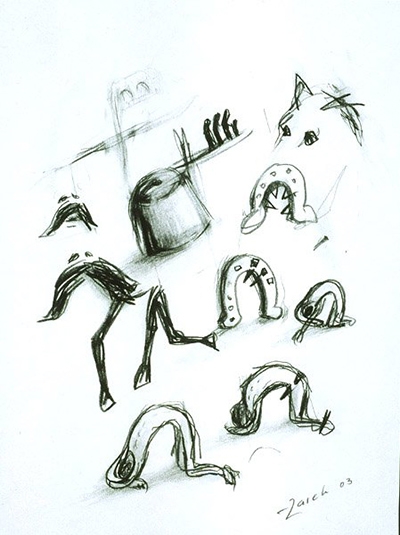CULTURAL GENOCIDE

Acts and measures undertaken to destroy the culture of a nation or an ethnic group is called "cultural genocide". Many facts prove that simultaneous with the massacres and deportation of Armenians in the Ottoman Empire, the government of the Young Turks masterminded and implemented systematic destruction of the material testimonies of the Armenian civilization.
THE ARMENIAN GENOCIDE

A genocide is the organized extermination of a nation aiming to put an end to their collective existence. The extermination of Armenians in the Ottoman Empire and the surrounding regions during 1915-1923 is called the Armenian Genocide. Those massacres were masterminded and perpetrated by the government of Young Turks and were later finalized by the Kemalist government.
view more
The anguish of the Armenian Genocide, which is being reborn with every Armenian, has its own reflection in the Armenian fine arts. Many Armenian well known artists have created artworks both in Armenia and in Diaspora that are the speaking witness of the Armenian great pain, loss and yearning. These artworks are also ode to the Armenian viable genes, will power of giving birth, living and creation. Genocide is the type of crime that does have any expiration date. Human speech is sometimes powerless in expressing those things that are possible to express only through art. These 100 artworks will continuously tell the world about the unhealed wound of the Armenian, millions of innocent victims, demolished heartlands, bowed churches, lost homeland and infinite belief. The power of art is undeniable and artworks are eternal.
Artist:
Hamuz (Hamazasp Mkitaryan)
Title:
The Survivors, 2015
Location:
Artist's Collection

Artist: Hamuz (Hamazasp Mkitaryan)
Title: The Survivors, 2015
Location: Artist's Collection
Hamuz: "Armenian refugees coving at the falling cross-stone and their faith. The salvation of the Armenian nation is in our faith and language."
Artist:
Lilit Stepanian
Title:
#1915, 2010
Location:
Private Collection

Artist: Lilit Stepanian
Title: #1915, 2010
Location: Private Collection
Lilit Stepanian: "The face of the Armenian is the reflection of his soul. This reflection, that changes time and again at the crossroads of centuries, contorts with its pain, shines with its triumph, cracks again and trembles, breaks and is born anew."
Artist:
Sarkis Hamalbashian
Title:
Ani is Beyond the Border, 2014
Location:
Artist's Collection

Artist: Sarkis Hamalbashian
Title: Ani is Beyond the Border, 2014
Location: Artist's Collection
Sarkis Hamalbashian: "Since my childhood, as an heir to survivors of the Armenian Genocide, I have heard stories about it and later tried to depict my impressions in my works. Later I realized that those stories were messages that should be passed to future generations through their representation in our works, until the recognition of the Genocide and the fulfillment of justice."
Artist:
Arthur Sarkissian
Title:
8 Image Lines, 2013
Location:
Artist's Collection

Artist: Arthur Sarkissian
Title: 8 Image Lines, 2013
Location: Artist's Collection
Arthur Sarkissian: "Art is a multilayered game of mind and soul. and the best way to justify the existence of the individual. Art is an opportunity for me to reevaluate and reanimate the old and the new, the chronology and the contemporary. In this painting I wanted to create a symbolic poem through the old and new images, bridges of the sculpures of the cities."
view more
share your arts
Here, you can upload your artwork dedicated to the Armenian Genocide. The uploaded artwork will be published in the
SHARED ARTS section.
Note: the site carries no responsibility over the copyright genuinity issues in the SHARED ARTS section. But still if you come across possible violation of copyrights, please, do not hesitate to contact us via info@100years100arts.am email address.

Artist: Adriana Angolian
Live Memory, 1994

Artist: Adriana Angolian
Gold Universe, 2016
Artist:
Khoren Der Harootian

Artist: Khoren Der Harootian
Ani (bronze), 1963
Artist:
Alexander Sadoyan

Artist: Alexander Sadoyan
Immigration
Artist:
Alexander Sadoyan

Artist: Alexander Sadoyan
Untitled

Artist: Levon Fljyan
Our Ancestors-2 (from Pixel 2 project), 2012

Artist: Kaloust Guedel
All Men are Created Alike, 2003

Artist: Zareh
Turkish Soup Made with Armenian Bones, 1998

Artist: Arthur Lazaryan
Never Again
view more



























